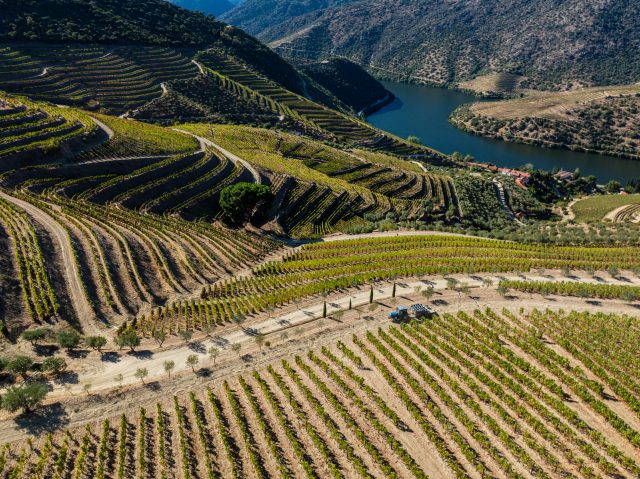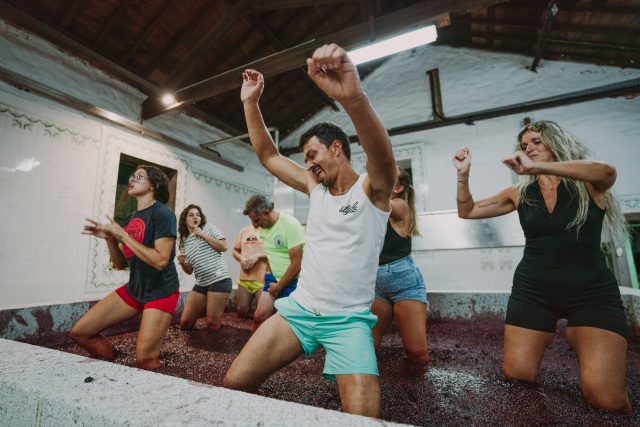Fladgate reports on ‘exciting’ 2024 vintage as dry spell breaks
By Lauren EadsIt’s been a tumultuous few years for Port. Having navigated the immediate post-Covid years, defined by distribution difficulties and oversupply, there are now further questions over the sustainability of its beneficio system, while rising labour costs, combined with a shortage of labourers, means that the Douro is facing headwinds on all fronts.

But there is some positivity coming out the region. The 2024 vintage has been described by Adrian Bridge, CEO and chairman of The Fladgate Partnership, which owns Taylor’s and Fonseca, as the “most exciting” he’d seen in his 30 years of living in Portugal, during an online update on the 2024 harvest, hosted alongside David Guimaraens, Fladgate’s technical director and head winemaker. “There’s beautiful tannins, lots of structure, over layers of fruit, and if you’re walking through the wineries you really get that intense berry fruit aroma, which is unusual,” said Bridge.
Specifically, the 2024 vintage has been defined by the end of a particularly long series of dry vintages (2015-2022), explained Guimaraens, which finally broke in the winter before the 2023 vintage, affording much wetter conditions and higher yields. “Whereas 23’ was a season of the vineyards regaining vigour following such a dry cycle, this winter of 24’ has been particularly important to reinforce the re-establishment of the water reserves in the ground, and that has been reflected in the vineyards themselves,” explained Guimaraens. “The growth throughout the 2024 season of our vines have been particularly healthy, particularly even, which very much characterises the growing cycle of this year.”
Budburst occurred early, on the 5th March, with spring seeing higher rainfall than usual. “Fortunately, it was also quite a mild spring in terms of temperature, actually quite low. So what could have been a season with a fair bit of disease in terms of mildew, was not and so it was a good year in the vineyard. We were able to control any diseases quite easily and so our vineyards and our vines had a very good growing season.”
Cooler weather continued, causing ripening to slow, which meant that despite an early bud burst, and no rain from the end of July onward, eventual ripening occurred later, particularly for red varieties (15th September vs whites on the 26th August). August was dry with maximum temperatures “not really that high”, but the minimum daily temperatures were very high. “It was actually quite a surprise how much the vines were affected by this dry, high average temperature,” adds Guimaraens. “One of the things that that has marked this season is the struggle that vineyards under 20 years of age have had, and particularly the more exposed areas. But in contrast, how well the older, more established vineyards have behaved, vineyards over 25-30 years of age.”
Partner Content

As for how the 2024 harvest itself is progressing, Guimaraens said that 80% of it’s Port grapes were in, but because of ongoing rain it was now a “race against time” to get the rest in, with the quality of grapes declining daily and labour shortages compounding the pressure. Impressions on the quality so far is promising, says Guimaraens. “What characterizes the Ports from the 2024 harvest so far is the freshness of fruit, beautiful aromas, beautiful freshness, and the tannins are very, very fine,” adding: “It’s always encouraging when at this early stage you get the spirit being so well integrated, and the fruit coming through so nicely. So we’re very happy with the harvest, and we’re looking forward to seeing how these Ports develop into the winter.”
This was also the first year that Fladgate has directed “serious focus” towards the production of table wine, following the purchase of Quinta do Portal in March. From now on the Quinta will only produce table wines, with its Port production shifting to Roêda. “We took over six months before harvest and have really done the best we can do,” says Bridge. “As soon as harvest finishes we’ll start in earnest looking at the reorganization. It’s a project that we think will take somewhere in the region of three to five years to fully get to the way we want.”
As for Port’s wider challenges, much has been said about the ongoing inefficiencies of the Douro’s Beneficio system, and calls for the Douro’s aguardente (the spirit used to fortify its Ports) to be made in Portugal, rather than importing it from Spain or France. The Portuguese Government has also enforced 8% minimum salary increases over the last five years, which has seen the cost of labor rise by 37%,” says Bridge, pushing up costs, made more difficult by a shortage of manual labourers in the region. As a consequence, many markets have had to increase prices. But Bridge is keen to assuage some of the negativity that these challenges have brought, remaining optimistic about Port’s position in global markets, particularly at the top end.
“I think if we look at the macro trends, we can still see that special category Ports are in good demand around the world, and we’re very encouraged to see the tremendous interest that we’ve had in a number of markets for our latest release, which was the 2022 vintage Port – special categories will continue to grow,” said Bridge, adding: “It is increasingly obvious that the Douro Valley cannot be an area that competes on low priced wines. It’s a destination for making great quality wine, whether that be Port or table wine.”
Related news
Flotsam, jetsam and elixirs: Falernum goes submarine




